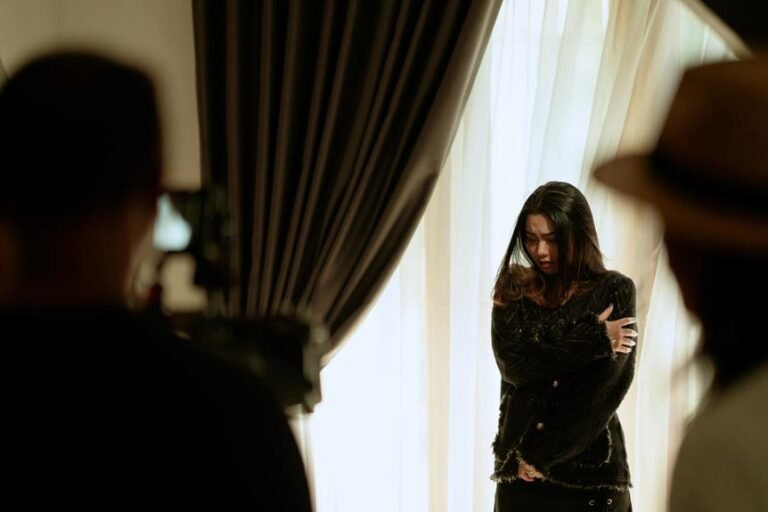Delving Into Instax Film: All You Need to Know
Discover the world of Instax film, where instant snapshots capture cherished memories effortlessly. Introduced by Fujifilm in the 1990s, this innovation reshaped photography. Various film types offer an array of colors and styles to suit your artistic vision. With Mini, Square, and Wide formats, you can choose the perfect size for any occasion. Master your Instax camera settings for best results and experiment with creative techniques like double exposure and light painting. Elevate your photography skills with tips and tricks that ensure stunning visuals. Ignite your creativity with Instax film and reveal endless possibilities.
A Quick Overview
- Instax film revolutionized instant photography in the 1990s.
- Various film types cater to different color choices and photographic needs.
- Instax film is available in Mini, Square, and Wide formats to suit diverse preferences.
- Master camera settings and techniques to maximize the potential of Instax film.
- Implement creative techniques such as double exposure and light painting for unique Instax photos.
History of Instax Film
The history of Instax film dates back to the 1990s when Fujifilm introduced this instant film technology to the market.
It marked a significant milestone in the evolution of instant photography, revolutionizing the way people captured and shared memories.
The impact of Instax film on modern photography is undeniable, as it continues to inspire creativity and foster a sense of community among photography enthusiasts worldwide.
Types of Instax Film
When exploring the world of Instax film, one encounters a diverse range of film types tailored to meet various photographic needs and preferences.
- Film Quality: Instax film comes in different quality options, from standard to higher quality variations.
- Color Options: You can choose from a variety of color options such as vibrant, pastel, or monochrome films to suit your style and mood.
Understanding Film Sizes
Explore the various Instax film sizes to understand how they impact your photography needs and creative vision. Film formats like Mini, Square, and Wide offer different pros and cons. Mini is compact and great for everyday snapshots. Square provides a more artistic square format, while Wide suits group shots.
Comparing sizes, Mini is 54mm x 86mm, Square is 62mm x 62mm, and Wide is 99mm x 62mm, each catering to diverse preferences.
Using Instax Film Cameras
To maximize the potential of your Instax film photography, understanding how to effectively utilize Instax film cameras is key.
- Camera settings: Familiarize yourself with the different modes on your Instax camera to adapt to various shooting conditions.
- Lighting techniques: Experiment with natural and artificial light sources to enhance the quality of your Instax prints.
- Focus adjustment: Learn how to adjust the focus settings to guarantee sharp and clear images.
- Flash usage: Understand when to use the flash to avoid underexposed photos.
Tips for Better Instax Photos
Enhance your Instax photography skills by implementing practical techniques for capturing stunning images.
For better results, experiment with lighting tricks like backlighting or golden hour for warm tones.
Consider composition hacks such as the rule of thirds or leading lines to create visually appealing photos.
Creative Techniques With Instax Film
Implement new and innovative techniques when using Instax film to elevate your photography game and push the boundaries of creativity.
- Double Exposure: Combine two different images in one frame for a unique effect.
- Splitzer Technique: Use a splitzer to cover parts of the lens and create divided images.
- Light Painting: Experiment with long exposures and light sources to paint creative patterns.
- Collage Creation: Arrange multiple Instax prints into artistic compositions for a visually stunning result.
Storing and Preserving Instax Prints
Proper storage and preservation of Instax prints is essential to maintain their quality and longevity. To preserve your prints, consider using preservation methods such as storing them in acid-free sleeves or albums in a cool, dry place away from direct sunlight and humidity.
For display options, framing your prints with UV-protective glass can help prevent fading and damage over time, ensuring they last for years to come.
Frequently Asked Questions (FAQs)
To better understand Instax film and address common queries, let's now explore the Frequently Asked Questions (FAQs) related to this popular instant photography medium.
- What happens if Instax film expires?
Instax film can still be used after its expiration date, but the image quality may deteriorate.
- How can I maintain the quality of my Instax film?
Store your film in a cool, dry place away from sunlight to preserve its quality.
- Can expired film affect the colors in my Instax prints?
Yes, expired film may result in color shifts or inconsistencies in your photos.
- Is it worth using expired Instax film?
While expired film can create unique effects, be aware that the quality may not be as reliable as with fresh film.
Frequently Asked Questions
Can Instax Film Be Used in Any Other Type of Camera?
Yes, Instax film can only be used with cameras specifically designed for it, such as Instax cameras. Attempting to use it with other camera types may result in damage or malfunction. Stick to compatible options for best results.
How Can I Fix Overexposed Instax Photos?
To fix overexposed Instax photos, adjust exposure using filters or lighting techniques. If needed, editing software can help correct exposure levels. Experiment with different methods to find the best solution for your photos.
Are There Any DIY Hacks for Instax Film Development?
To develop Instax film with DIY techniques, consider using a darkroom or a light-proof box. Creative alternatives include experimenting with instant coffee or tea staining. These methods offer unique ways to personalize your film development process.
What Are the Differences Between Instax Mini and Instax Square?
When choosing between Instax Mini and Instax Square, consider the size difference and features. Instax Mini film is smaller, while Instax Square offers a more squared format. Square has a 1:1 aspect ratio, ideal for artistic shots. Mini is compact and great for everyday use.
Can Instax Film Be Used for Professional Photography Purposes?
For professional photography purposes, Instax film offers creative applications beyond snapshots. Its instant results can be used for event photography, artistic projects, and alternative uses like creative portraiture or experimental photography techniques.





